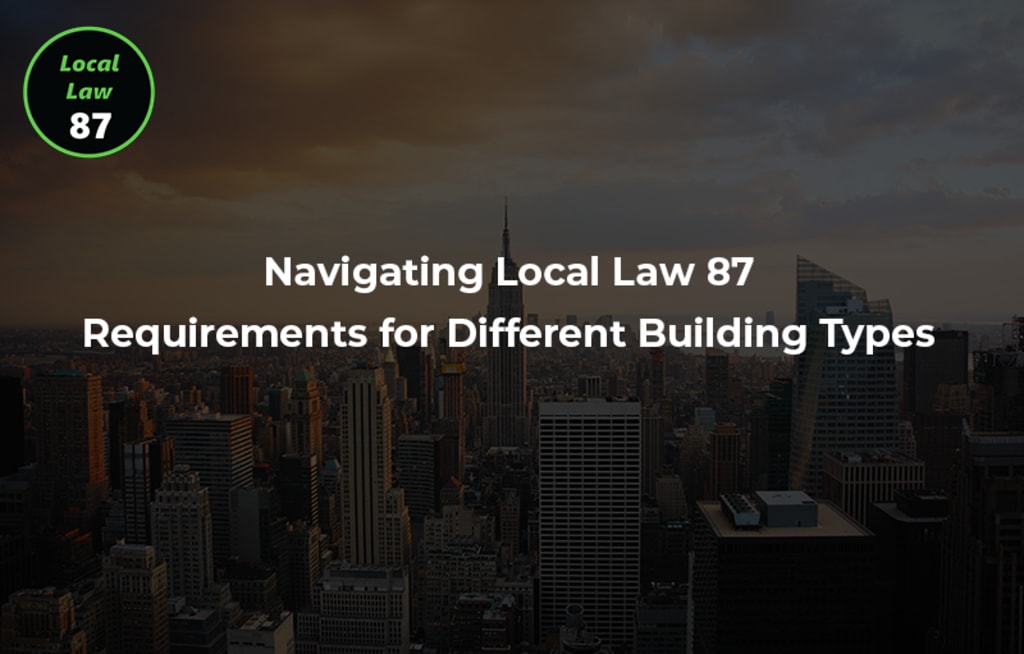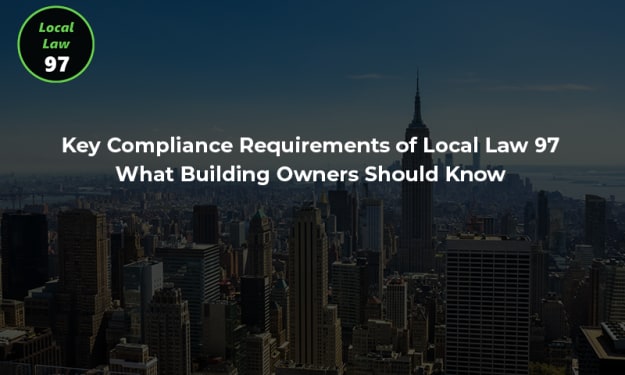Navigating Local Law 87 Requirements for Different Building Types
Nyc Local Law 87

Local Law 87 (LL87) is a significant energy conservation law in New York City (NYC) that aims to enhance the energy efficiency of buildings and reduce carbon emissions. While LL87 applies to buildings exceeding 50,000 square feet, it is important to note that different building types have varying requirements and considerations under this law. In this article, we will explore how to navigate LL87 requirements for different building types, ensuring compliance and energy efficiency improvements tailored to specific structures.
Residential Buildings
Residential buildings, such as apartment complexes and condominiums, face unique challenges when it comes to LL87 compliance. In general, residential buildings fall under the scope of LL87 if they exceed 50,000 square feet. However, compliance can be achieved by completing the energy audit and retro-commissioning measures for common areas, such as hallways, lobbies, and shared mechanical systems. Individual units are typically exempted from the LL87 requirements.
Commercial Buildings
Commercial buildings, including office buildings, retail spaces, and hotels, are subject to Local Law 87 if they exceed the 50,000 square feet threshold. Compliance for commercial buildings involves conducting energy audits and retro-commissioning measures for the entire building, including individual tenant spaces. Building owners must collaborate with tenants to gather necessary information and coordinate the auditing process to ensure comprehensive compliance.
Mixed-Use Buildings
Mixed-use buildings, which combine residential and commercial spaces within the same structure, require careful consideration when it comes to Local Law 87 compliance. Each component of the building (residential and commercial) should be evaluated separately to determine compliance requirements. The residential portion of the building may only need audits and retro-commissioning measures for common areas, while the commercial section may require full compliance for the entire space.
Industrial Buildings
Industrial buildings, such as warehouses and manufacturing facilities, present unique challenges in terms of LL87 compliance due to their specific energy usage patterns and equipment. While the 50,000 square feet threshold applies to industrial buildings, compliance may require additional considerations. Energy audits should focus on the building's operational processes, energy-intensive equipment, and potential areas for energy optimization. Retro-commissioning measures should address the specific systems and machinery used in the industrial operations.
Public Buildings
Public buildings, including government facilities, schools, and hospitals, are also subject to LL87 compliance if they exceed the designated square footage threshold. Compliance for public buildings entails conducting energy audits and retro-commissioning measures for the entire facility, encompassing both administrative and operational areas. Given the public nature of these buildings, it is crucial to prioritize energy efficiency improvements to set an example for the community and maximize energy savings.
Preparing for LL87 Compliance
- Regardless of the building type, thorough preparation is key to successfully navigate LL87 requirements. Building owners should:
- Understand the law: Familiarize themselves with the specific requirements of LL87, compliance deadlines, and the necessary documentation.
- Engage qualified professionals: Work with certified energy auditors and retro-commissioning agents experienced in the respective building types to ensure accurate assessments and compliance.
- Coordinate with tenants: For commercial and mixed-use buildings, collaborate with tenants to gather information, access tenant spaces, and coordinate the auditing process.
- Implement energy-saving measures: Based on the audit findings, prioritize and implement energy-saving measures tailored to the specific building type, systems, and operations.
Conclusion
Navigating LL87 requirements for different building types involves understanding the unique considerations and tailoring compliance efforts accordingly. Whether it's residential, commercial, mixed-use, industrial, or public buildings, building owners must conduct energy audits and retro-commissioning measures as required by the law. By working with qualified professionals, coordinating with tenants when applicable, and implementing energy-saving measures, building owners can achieve LL87 compliance, improve energy efficiency, and contribute to a more sustainable NYC.
About the Creator
The Cotocon Group
Sustainability Consulting Experts in NYC. Leading the Real Estate Industry in Reducing GHG Emissions & Increasing Property Value.
Website :- https://www.thecotocongroup.com






Comments
There are no comments for this story
Be the first to respond and start the conversation.